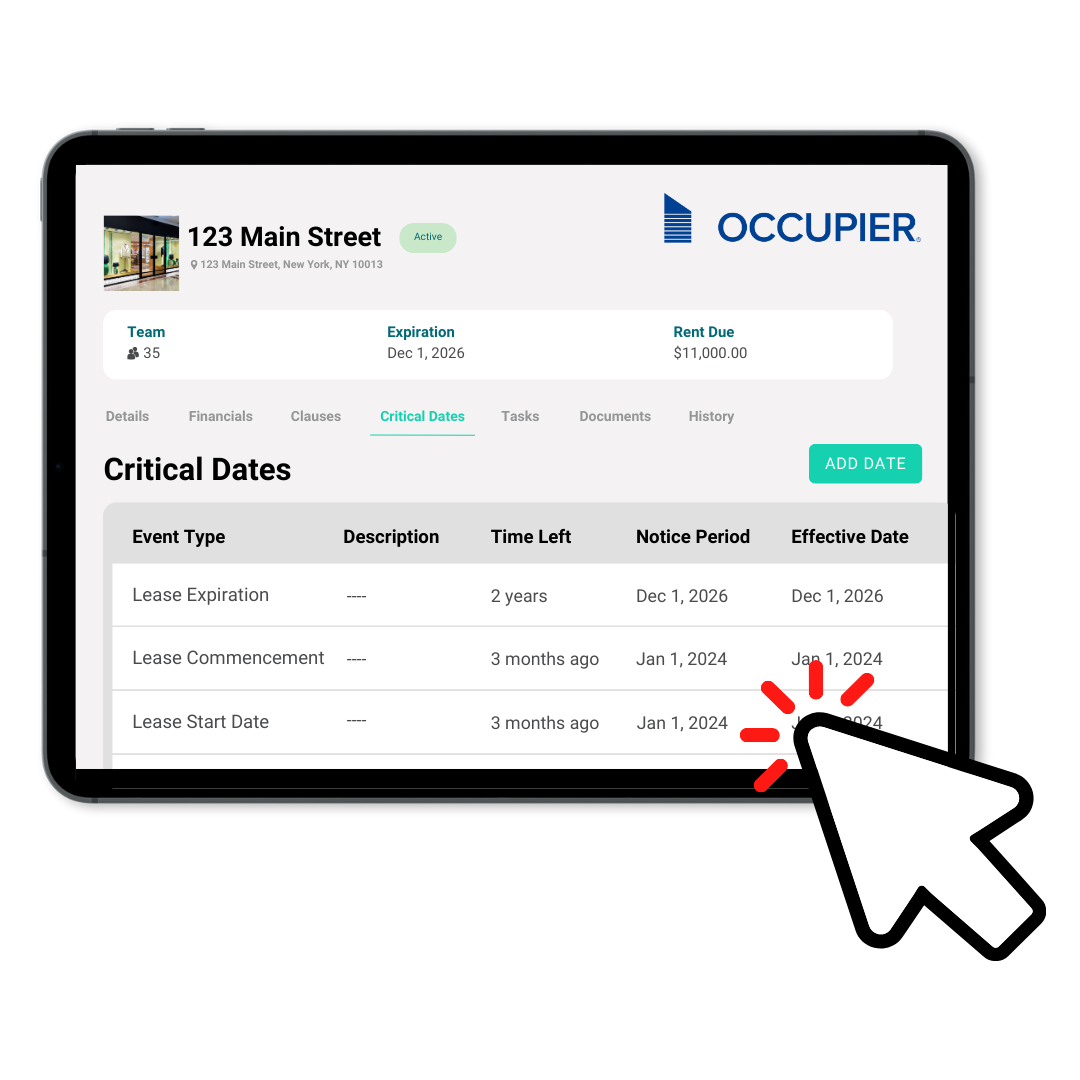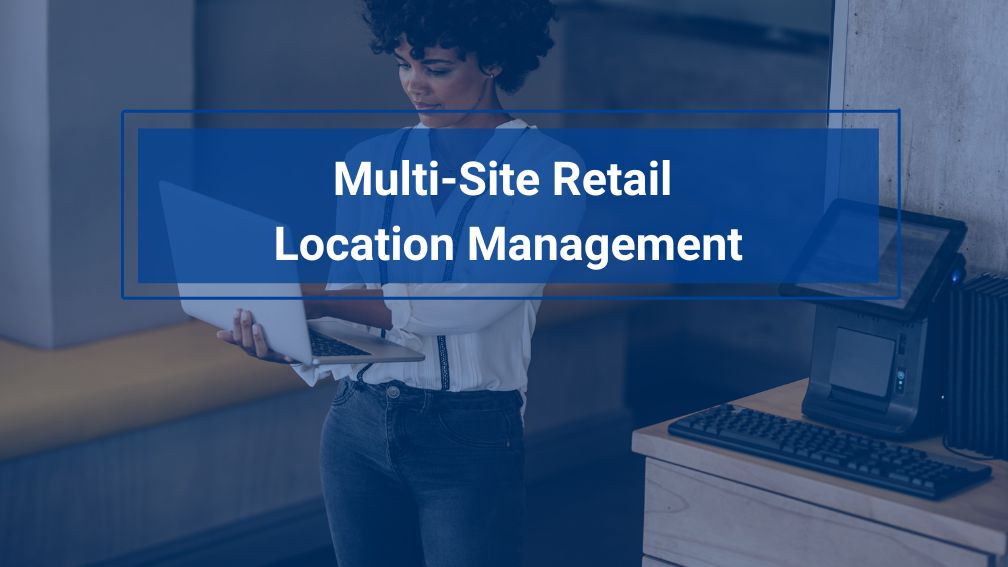5 Tips for Effective Multi-Site Retail Management
Last Updated on May 30, 2024 by Morgan Beard
Effective multi-site retail locations management requires standardizing operations, utilizing centralized management systems, fostering strong communication channels, implementing robust data management practices, and prioritizing customer engagement. In this article, we will explore the most common challenges that multi-site retailers experience and our top five tips in detail to help you in efficiently managing multi-site retail locations. So, let’s dive in!
Common Multi-Site Retail Management Challenges
From asset maintenance and cost optimization to lease management and regulatory compliance, multi-site retailers face a myriad of challenges spanning the entire property lifecycle. Failure to address these challenges can lead to operational inefficiencies, increased costs, and subpar customer experiences.
- Cost Management: Acquiring, operating, and maintaining a retail lease portfolio is a significant expense. Organizations must optimize spending across the entire lifecycle to ensure safe and appealing environments for customers.
- Lease Administration: Retailers often manage properties subject to various lease agreements with varying terms and conditions. Monitoring renewal dates and negotiating new leases can be time-consuming and complex.
- Asset Maintenance: Ensuring regular maintenance of assets and facilities is crucial for providing superior shopping experiences. However, manual processes and inefficient technologies can make this task challenging.
- Regulatory Compliance: Organizations must adhere to a broad range of regulations at local, state, and federal levels, including building codes, zoning, safety standards, and environmental regulations.
- Sustainable Growth: Large retailers must manage processes related to new locations, such as site selection, LOI tracking, construction timelines, capital improvements, and store openings.
- Data Management: Keeping track of large amounts of data and ensuring its reliability for informed decision-making can be a significant obstacle.
- Technology Integration: Adopting and integrating new technologies, such as asset management, document management, and project management software, can present challenges.
- Adapting to Market Trends: Retailers must stay ahead of the curve by adapting to changing market conditions and consumer preferences, such as the rise of experiential retail, omnichannel shopping, and automation technologies.
5 Tips to Effective Multi-Site Retail Management
1. Standardize Locations Operations
One of the key challenges in multi-site retail locations management is maintaining consistency across all spaces. Standardizing operations ensures that the customer experience remains consistent, regardless of the location they visit. Here are some steps you can take to standardize your operations:
- Store Operations: Develop comprehensive standard operating procedures (SOPs) that outline the required processes and protocols for each retail location.
- Training: Train your staff thoroughly on these SOPs to ensure they understand and follow the prescribed guidelines.
- Business Processes: Implement regular performance reviews and audits to identify any deviations from the standard procedures and take corrective actions promptly.
- Single System of Truth: Leverage cloud technology solutions, such as task management software, lease management software, inventory management software and POS systems like Shopify to streamline operations, easily share information, and track compliance across all locations.
By standardizing your operations, you can ensure consistent service quality, enhance efficiency, and maintain your brand image across multiple retail locations.
2. Utilize Centralized Location Management Systems
To effectively tackle multi-site retail locations management, it is crucial to have a centralized location management system in place. This system allows you to monitor and control various aspects of your business from operations to lease obligations, and location expenses on a single platform. Here’s how you can benefit from a centralized management system:
- Data Management: Gain real-time visibility into operating expenses, space utilization, percentage rent costs against in store sales, and other key metrics across all locations.
- Lease Administration: Easily manage and access your lease rights and obligations, track location renewals, expansions and expiration dates. Track preventative maintenance request and common area maintenance (CAM).
- Team Communication: Facilitate seamless collaboration between different stakeholders via location task management and communication workflows.
- Portfolio Analytics: Generate consolidated reports and analytics to make data-driven decisions and identify areas for improvement.
Implementing a centralized location management system empowers you with the necessary tools to streamline operations, make informed decisions, and optimize the performance of your multi-retail locations.
3. Foster Strong Communication Channels
Effective communication is vital for successful multi-site retail locations management. It ensures that information flows seamlessly between headquarters, regional managers, and individual store managers. Here are a few strategies to foster strong communication channels:
- Team Cohesion: Implement regular check-ins and team meetings to align goals, share updates, and address any concerns or challenges.
- Collaboration: Utilize communication tools, such as instant messaging platforms or project management software, to facilitate quick and efficient communication between teams.
- Escalation Protocols: Establish clear channels for reporting and escalation of issues, ensuring that all problems are addressed promptly.
By fostering strong communication channels, you can promote transparency, collaboration, and synergy across all your retail locations.
4. Adopt Efficient Financial Operating Systems
Managing finances across multiple retail locations can be a complex and time-consuming task for real estate operations professionals. Efficient financial operating systems are essential for streamlining processes, ensuring accuracy, and making data-driven decisions. Here are some key considerations:
- Centralized Accounting Software: Adopt a robust accounting solution that integrates with your other systems, enabling real-time visibility into financial data across all locations.
- Integrate with Lease Management Systems: Ensure seamless integration between your financial systems and lease management solutions to accurately track rental payments, escalations, and lease obligations.
- Establish Standardized Reporting: Develop consistent reporting templates and procedures to monitor financial performance, identify cost-saving opportunities, and make informed budgeting decisions.
- Leverage Data Analytics: Utilize advanced analytics tools to gain insights into spending patterns, forecast future expenses, and optimize resource allocation across your portfolio.
By adopting efficient financial operating systems, real estate operations professionals can enhance visibility, control costs, and make data-driven decisions that drive profitability across their multi-site retail operations.
5. Prioritize Customer Engagement
While standardization is crucial for maintaining a consistent experience for your brand, retail operations professionals must also prioritize localization and customer satisfaction engagement strategies. Each retail location operates within a unique market context, and understanding local preferences and demographics can be the key to success. Here’s how you can achieve local adaptation and enhance customer engagement:
- Conduct Market Research: Regularly analyze local market trends, customer preferences, and competitor activities to identify opportunities for customization and differentiation.
- Tailor Product Assortments and Merchandising: Work closely with merchandising teams to curate product assortments and in-store displays that cater to the specific needs and preferences of the local customer base.
- Localize Marketing Campaigns: Collaborate with marketing teams to develop localized campaigns, promotions, and advertising strategies that resonate with the target audience in each market.
- Foster Community Connections: Encourage store teams to actively engage with the local community through sponsorships, events, partnerships, and other initiatives that build brand loyalty and strengthen community relationships.
Managing Multi-Retail Locations
Effectively managing multi-retail locations is a complex undertaking that requires strategic implementation of operational standards, centralized data management, and localized customer engagement strategies. As a real estate operations professional, you’re continuously juggling a myriad of tasks – from lease administration and asset maintenance to regulatory compliance and location cost optimization.
Managing a growing portfolio of leased locations, means you’ll need a powerful solution that simplifies the complexities of lease administration and provides real-time visibility into your entire portfolio. Occupier is the industry-leading lease management platform designed specifically for multi-site retailers like you.

Product Tour
Take a self-guided tour and see how the fastest-growing commercial tenants leverage Occupier for lease management & lease accounting.
